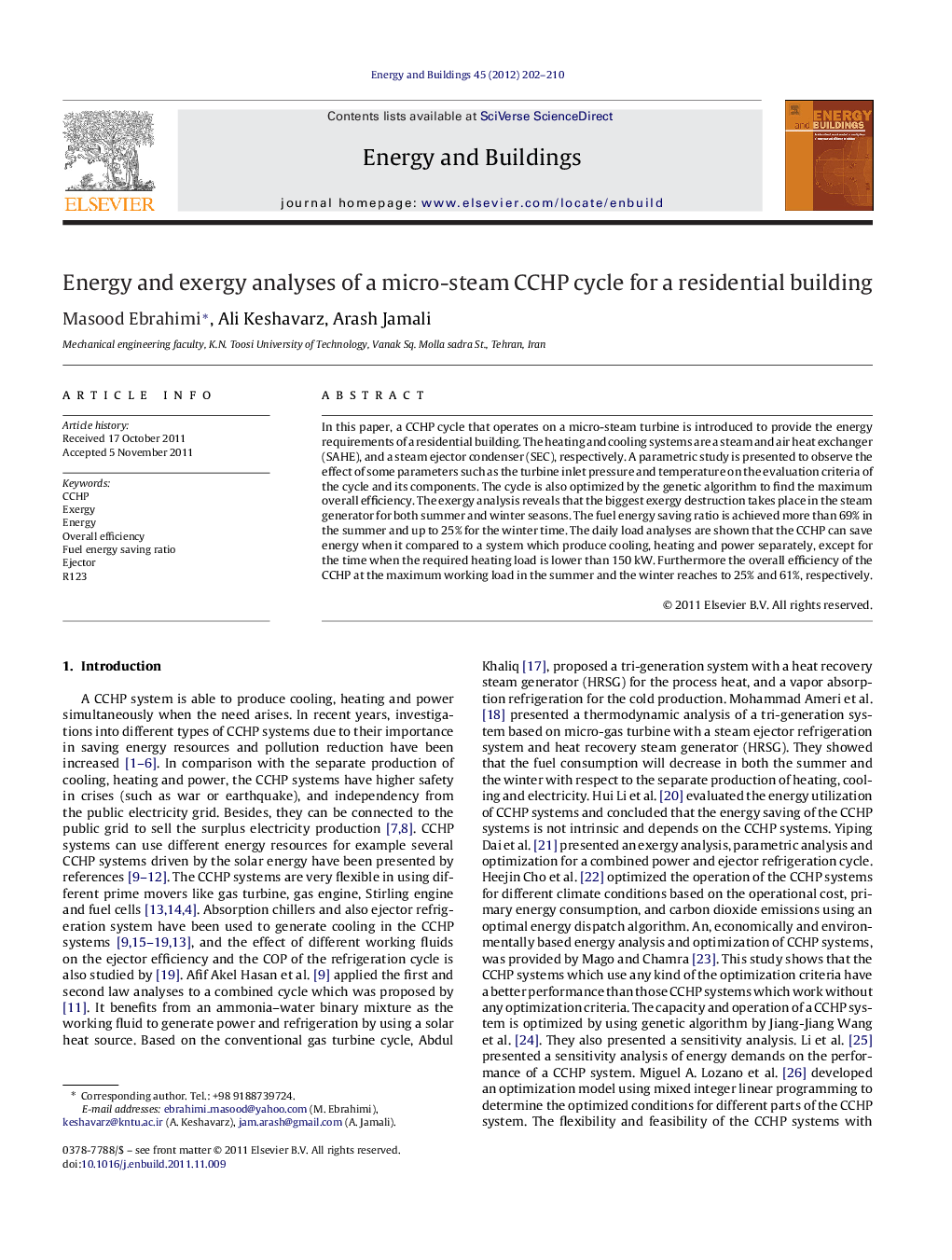| Article ID | Journal | Published Year | Pages | File Type |
|---|---|---|---|---|
| 264001 | Energy and Buildings | 2012 | 9 Pages |
In this paper, a CCHP cycle that operates on a micro-steam turbine is introduced to provide the energy requirements of a residential building. The heating and cooling systems are a steam and air heat exchanger (SAHE), and a steam ejector condenser (SEC), respectively. A parametric study is presented to observe the effect of some parameters such as the turbine inlet pressure and temperature on the evaluation criteria of the cycle and its components. The cycle is also optimized by the genetic algorithm to find the maximum overall efficiency. The exergy analysis reveals that the biggest exergy destruction takes place in the steam generator for both summer and winter seasons. The fuel energy saving ratio is achieved more than 69% in the summer and up to 25% for the winter time. The daily load analyses are shown that the CCHP can save energy when it compared to a system which produce cooling, heating and power separately, except for the time when the required heating load is lower than 150 kW. Furthermore the overall efficiency of the CCHP at the maximum working load in the summer and the winter reaches to 25% and 61%, respectively.
► The proposed CCHP saves energy during all summer time, but in the winter it does not save energy when the HL < 150 kW. ► The analyses recommend not using extraction in the turbine since by omitting the extraction, the overall efficiency increases. ► The maximum fuel energy saving ratio for summer and winter is 69% and 25%, respectively. ► Optimization shows that the maximum overall efficiency for summer and winter are 22.82% and 62.15%, respectively.
